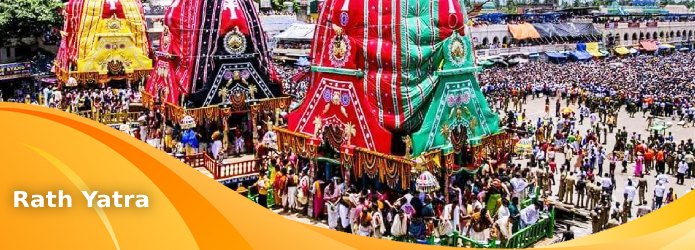
Vaisakhi festival in 2025 will be celebrated in April 13th, Sunday which is often referred to as the beginning of Solar year. This is widely celebrated in parts of North India and specifically in Punjab to pay gratitude to God for the Good harvest. People on this day visit the nearest Gurudwaras and do prayers. The Vaisakhi processions along with traditional performances (dancing and singing in groups) are carried out. . Many people also look at this festival through the lens of Online Astrology to understand its seasonal and spiritual importance.
Vaisakhi festival or Besakhi celebrations are carried out with a lot of joy and enthusiasm, celebrated in Punjab and neighbouring state Haryana. This festival has a lot of significance amongst the farmers, as these marks the time for the harvest of crops (Rabi crop). Vaisakhi or Baisakhi is one festival that is celebrated not just by Sikhs but some recent thoughts say it also has significant influence amongst the Hindus and Buddhists. In such auspicious times, some families also explore Kundli Matching before making important life decisions.
In the year 1567 guru Amar Das commenced Baisakhi or Vaisakhi to gather all the Sikhs would gather to receive blessings from Guru.
Vaisakhi 2025 Day - 13th April 2025, Sunday
Vaisakhi Sankranti 2025 Moment – 08:56 AM
Astrologically inclined devotees often check these timings along with Free online kundli to understand planetary influences on the day.
Baisakhi or Vaisakhi has special significance for Sikhs as on this day (in 1699), their tenth Guru Gobind Singh Ji kept the foundation of the Khalsa Panth. It is also looked at as the Sikh New Year.
In 1699 the then 10th Sikh Guru, Guru Gobind Singh Ji organized the Baisakhi celebrations to form Khalsa (to be pure, to be clear, to be free from). Guru Gobind Singh Ji who was also known as the last living Guru of Sikhism. Along with the formation of Khalsa, an army was formed to fight against the evils of the society, and the Mughal Emperors.
The key reason behind the formation of Khalsa was the martyrdom of ninth Sikh Guru, Guru TegBahadurJi (father of Guru Gobind Singh Ji). He was beheaded in public by the Mughal emperor Aurungzeb. Guru TejBahadurJi was against and also resisting the religious persecution of non-Muslims (Kashmiri Hindu pandit) and the. Islamic sharia rule of the Mughal Emperor Aurangzeb.
Aurangzeb wanted to spread Islam all over India and Guru TegBahadurJi stood up to fight for the injustice for all the Hindu and the Sikh community. Hence, the Mughals considered his a big menace.
After his death, Guru Govind Singh Ji took over as the next Guru of Sikhs. Guru Gobind Singh called a big gathering on the day of Vaisakhi at the Keshgarh Sahib near Anandpur (a city in Rupnagar district, Indian state of Punjab) on 30th March 1699.Thousands of people gathered at Keshgarh Sahib, then Guru Gobind Singh came out of the tent with a sword and delivered a very encouraging and powerful speech. At the end of the speech, he stated that every great deed was headed by fairly great sacrifice, and demanded anyone who can sacrifice his life should come forward. Demanded that anyone prepared to give his life come forward.
After three calls, a young man offered himself. The Guru took him inside the tent and came back outside alone with a bloodied sword. Then Guru Gobind Singh asked for the next volunteer. He repeated this three more times until a total of five Sikhs had gone inside the tent. Everyone at the assembly was worried and was thinking that Guru Gobind Singh Ji has killed all the five Sikhs. However, at this point, Guru Gobind Singh Ji came back along with all of them. Everyone who witnessed this was surprised to see all five men alive and wrapping turbans along with saffron-coloured garments.
Today, devotees visiting historical sites often explore spiritual items and literature related to Sikh traditions through an astro store to deepen their understanding.
Today we know all these five people as PanjPiara or 'Beloved Five' by the Guru. All of them were blessed with Pahul Ceremony ("khande di pahul", i.e. pahul by khanda, (a double-edged sarbloh sword). In a big iron vessel, water was filled, and he kept stirring it with Khanda, along with reciting of the five sacred texts (known as bani) Japji, Jaap, Savaiyye, BentiChaupai, and Anand Sahib.
Mata Sahib Kaur (third wife of Guru Govind Singh) poured Patasas (made with sugar crystals) into the iron vessel, blending their sweetness with the strength of the iron. Pahul which is often referred to as the nectar of immortality was given to the five Sikhs on their palm to drink. Guru Govind Singh called out aloud, “Bol Vahiguruji ka Khalsa Vahigurujiki Fateh (Utter, Hail the Khalsa who belongs to the Lord; the Lord to whom belongs victory).” And later all of them were given the same surname 'Singh' (another name for lion). He also instructed Sikhs to wear five k's Kesh (or long hair), Kangha (comb), Kirpan (dagger), Kachha (shorts) and a Kara (bracelet).
After this ceremony, Guru Govind Singh also discontinued the tradition of Guru's and ultimately urged to follow Guru Granth Sahib ad the eternal guide for the Sikhism, and not to shave their beard and hair.
Consult India's best astrologers online to know more about the festival and their significance.
Also Read:

Ram Navami is celebrating the birth of Rama in Ayodhya. Ram was the incarnations of Lord Vishnu who was born to establish truth and compassion in huma...

Maa Skandamata - Navratri Day 5: Explore the significance, mantra, and detailed puja vidhi of Maa Skandamata on Navratri’s fifth day. Embrace her divi...

Jagannath Rath Yatra 2025: Check out the updates on Jagannath Puri Rath Yatra 2025 date....